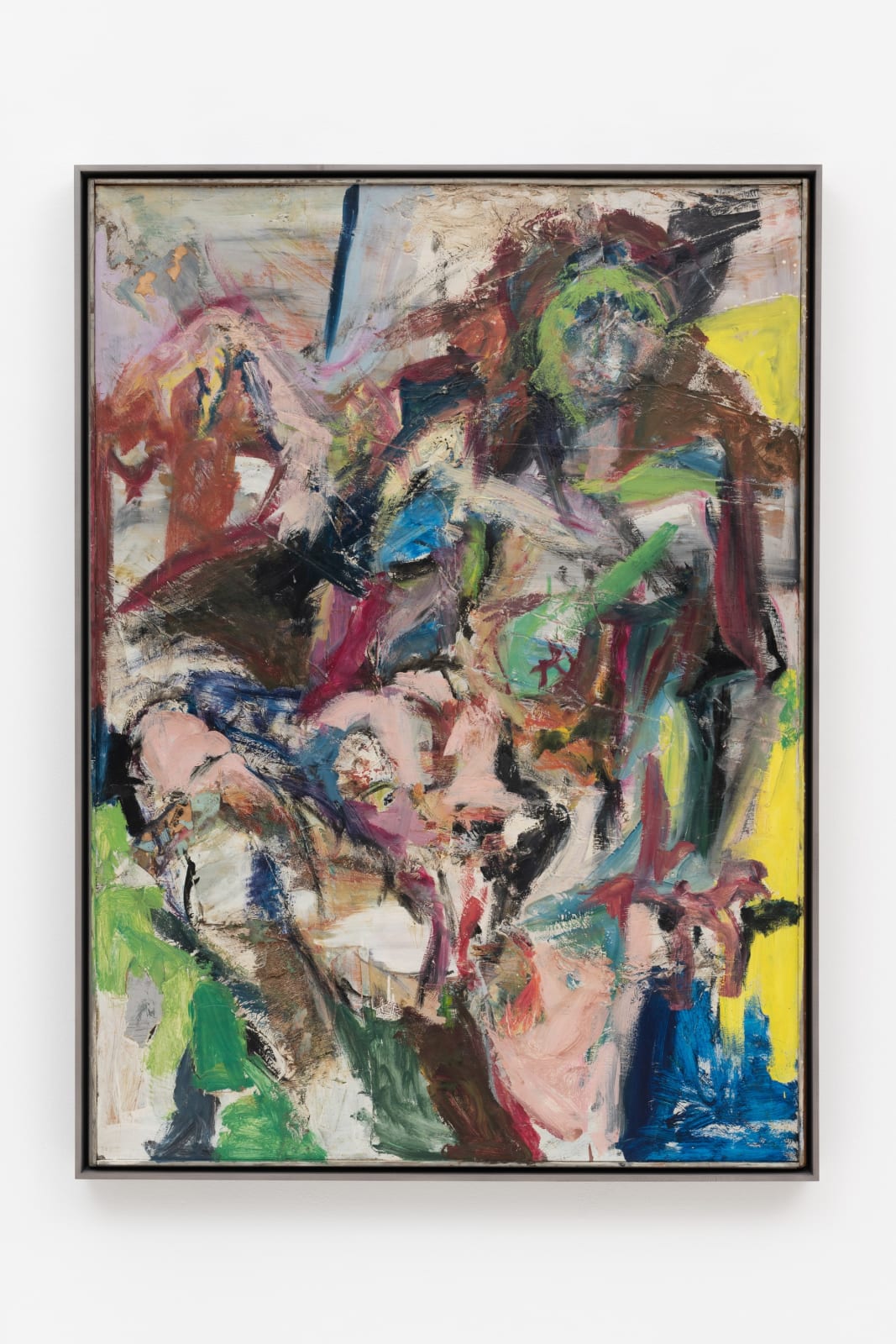
Carolee Schneemann
Green Figure, 1959
Oil, fabric, and paper on masonite
139.7 x 101.5 x 4.2 cm
55 x 40 x 1 5/8 in
Framed: 142.2 x 104.4 x 6.1 cm
56 x 41 1/8 x 2 3/8 in
55 x 40 x 1 5/8 in
Framed: 142.2 x 104.4 x 6.1 cm
56 x 41 1/8 x 2 3/8 in
Schneemann examined themes of sexuality, identity and gender through painting, performance, installation and photography. In much of her work, Schneemann explored her own identity as a woman in a patriarchal...
Schneemann examined themes of sexuality, identity and gender through painting, performance, installation and photography. In much of her work, Schneemann explored her own identity as a woman in a patriarchal society. All of Schneemann’s work is rooted in her formal training, and throughout her career she insisted on being thought of as a painter. By connecting the kinetic nature of her paintings and assemblages to her radical performances and films, Schneemann’s work has made a permanent mark on the history of art.
In 1954 Schneemann transferred to Columbia University’s School of Painting and Sculpture and the New School for Social Research in NYC. During these years in New York, and then in Bennington, Vermont, Schneemann’s creative milieu was deeply influential to her thinking; her companions and collaborators included composer James Tenney and filmmaker Stan Brakhage.
In Green Figure (1959) the impact of Abstract Expressionism can be seen in her gestural mark-making — as evidenced by visual parallels between Willem de Kooning’s Woman series of the early 1950s and the work. While connections can be made to her contemporaries, the lines that Schneemann developed over these five years were distinctly her own: In a letter to Levinson in 1957, Schneemann wrote of a visit by Leo Steinberg, art historian and critic who said that her paintings were ‘“vital, valuable…” and perhaps something else with V. And he said to work with landscape and figure as long as I could – that the world rarely offers itself as richness.’
In 1954 Schneemann transferred to Columbia University’s School of Painting and Sculpture and the New School for Social Research in NYC. During these years in New York, and then in Bennington, Vermont, Schneemann’s creative milieu was deeply influential to her thinking; her companions and collaborators included composer James Tenney and filmmaker Stan Brakhage.
In Green Figure (1959) the impact of Abstract Expressionism can be seen in her gestural mark-making — as evidenced by visual parallels between Willem de Kooning’s Woman series of the early 1950s and the work. While connections can be made to her contemporaries, the lines that Schneemann developed over these five years were distinctly her own: In a letter to Levinson in 1957, Schneemann wrote of a visit by Leo Steinberg, art historian and critic who said that her paintings were ‘“vital, valuable…” and perhaps something else with V. And he said to work with landscape and figure as long as I could – that the world rarely offers itself as richness.’
Provenance
1959 - 2022 - Artist/Carolee Schneemann FoundationExhibitions
Carolee Schneemann: 1955-1959, Hales London, 17 September-29 October 2022Carolee Schneemann: 1955–1959, Hales Gallery, London, UK (2022)